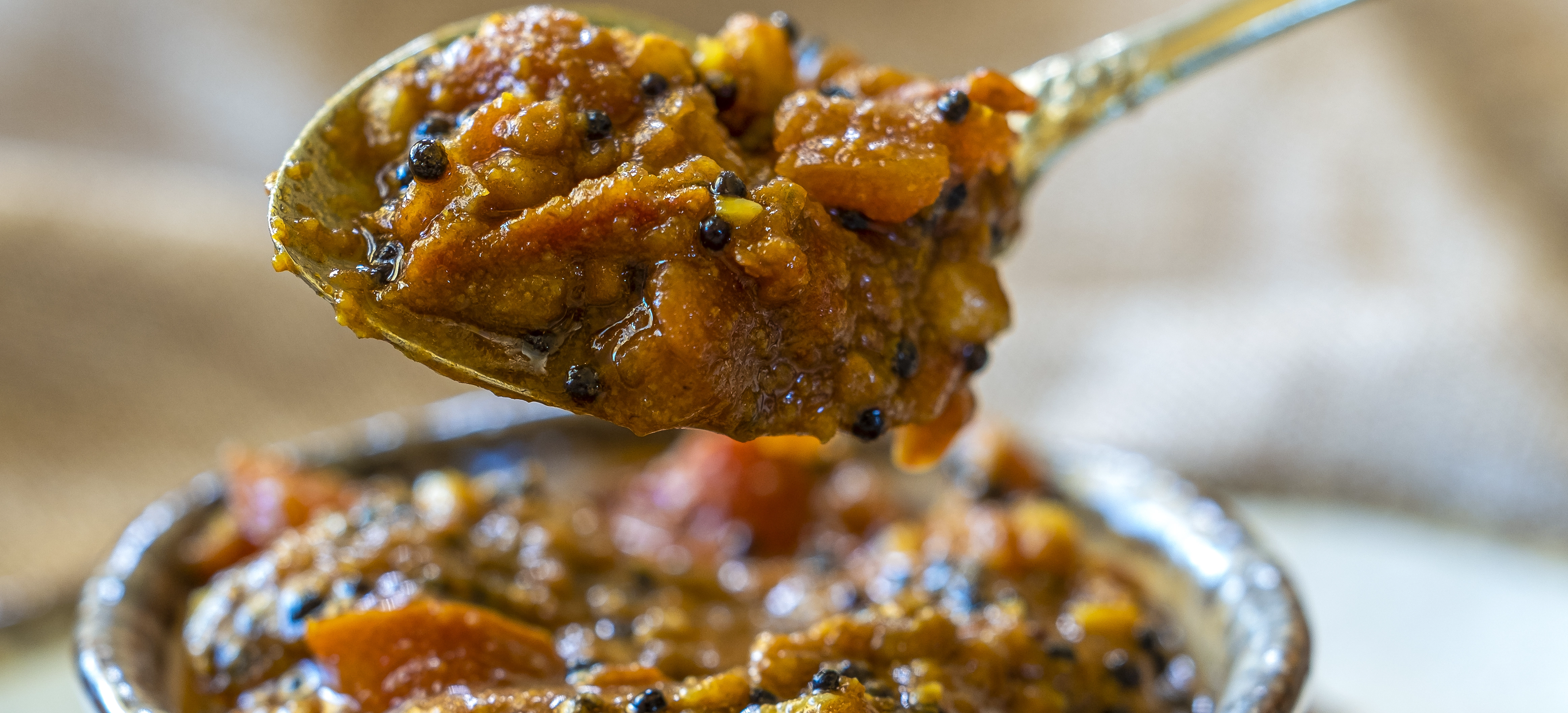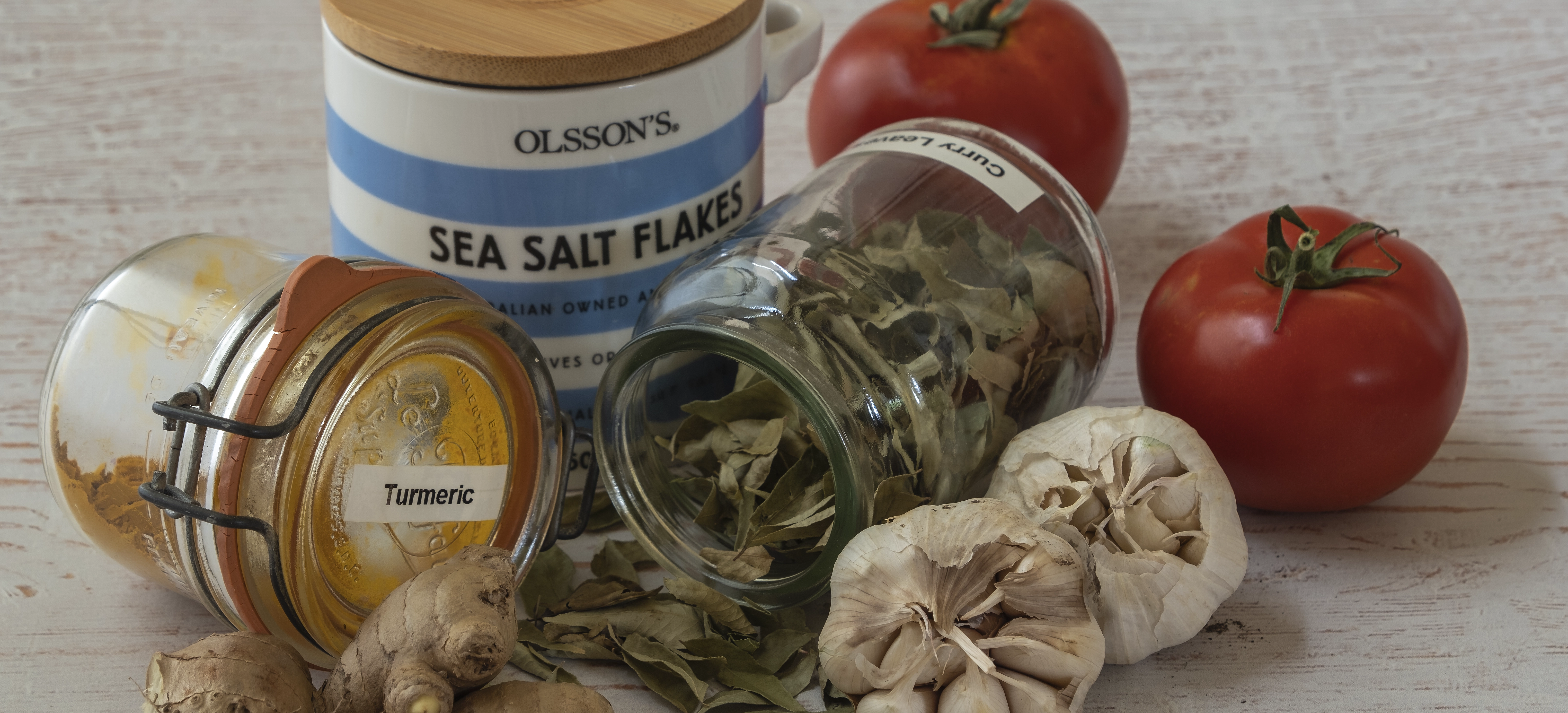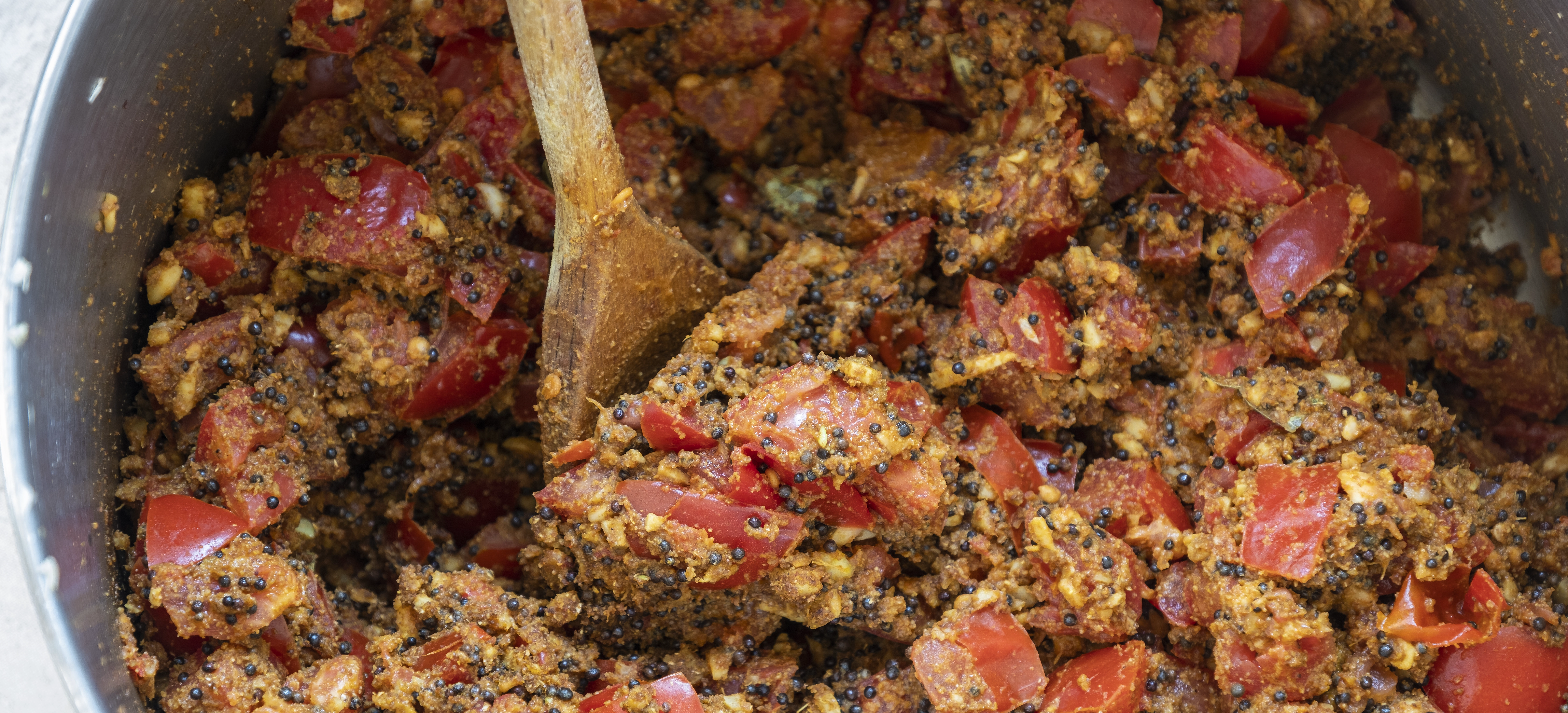Indian Tomato Kasundi
- Pickles, Chutney, Relish & Sauces

Summer ripened tomatoes combined with aromatic spices produces a rich and fragrant Indian chutney. Kasundi, a quintessential part of the Bengali cuisine, is simple to make, adds colour and vibrancy and is the crowning touch when served as an accompaniment to an Indian meal or BBQ. But don’t stop there. Serve warm with pita or Turkish bread, use as a spicy base on a pizza, add to cream cheese or ricotta and serve as a dip or pair with snacks, appetisers and finger food. Its versatility is endless. Make it while the tomatoes are plentiful and store in the pantry. A past work colleague shared her mother’s family recipe with me. This has since become one of my most treasured recipes. Special thanks to Donna’s mum.
Once the prized possession of Indian royals and the upper classes, only elite women had the permission to prepare it at home according to rigid customs. Thankfully with the passing of years and cultural change, this condiment now plays a central role in Bengali households.
- Preparation Time:
- 30 minutes + marinating overnight
- Cooking Time:
- 1.5 hrs
- Quantity:
- 15 x 325 ml jars
PREPARATION
Sterilise sealable glass jars and lids.
Prepare tomatoes and salt overnight as outlined in the method section below.

INGREDIENTS
- 4 kg
- Red tomatoes, ripe
- 150g
- Salt
- 250ml
- Peanut oil
- 200g
- Coriander powder
- 200g
- Cumin powder
- 200g
- Mustard seeds, yellow
- 100g
- Mustard seeds, black
- 2 Tablespoons
- Turmeric powder
- 1 Tablespoon
- Chilli powder
- 400g
- Fresh ginger, grated
- 4
- Garlic bulbs
- 20
- Curry leaves, dried
- 800g
- Sugar, white
- 1.5 litres
- Vinegar, white wine

METHOD
Wash and gently dry the tomatoes. Remove the stem by inserting a small sharp vegetable knife a short distance from the stem. Using a slight inward angle, cut in a circular motion all the way around the stem. Repeat the process until the stem has been removed from all the tomatoes.
Coarsely chop the tomatoes, sprinkle with salt, cover with a clean tea towel and leave overnight or a minimum of 12 hours.
Pull the garlic bulbs apart and peel each clove. Prepare the garlic in advance as it can take a few minutes to prepare 4 bulbs of garlic. In a large saucepan heat the peanut oil and gently cook the mustard seeds, stirring continuously until they pop. Then add spices, ginger, and garlic, curry leaves and fry gently until they are golden brown.
Drain the tomatoes, discarding the juice and any salt that has not dissolved. Add the tomatoes to the cooked spice mixture, then add the sugar and vinegar.
Simmer gently uncovered, stirring frequently, to prevent it from burning on the bottom of the pan for approximately 1.5 hours or until it has reached a thick chutney consistency.
Use a funnel to pour into warm dry sterilised screw cap sealable jars. Fill to approximately 2.5cm (I inch) from the top of the jar.
Seal while hot. Label and store in a cool dark place in the kitchen or pantry.
Allow to mature for at least 2 weeks before eating.
NOTES
- The amount of spices and garlic (yes it's 4 whole bulbs of garlic!) sounds extraordinary, but the recipe quantities are correct. The final result will be full flavoured, fragrant and very, very delicious.
- The degree of heat of the kasaundi depends upon the amount of and type of chilli powder used.
- Salting the tomatoes and leaving them to drain overnight draws out excess water. This is drained off and discarded. Removing the excess water considerably reduces the cooking time required to achieve a naturally thickened consistency.
- Use good quality pickling salt when making pickles and preserves. Many commercial salt brands contain stabilisers and anti-caking agents and often iodide which forms a whitish haze and sediment. These additives and in particular iodine can affect the appearance and taste of pickles and preserves during the maturation and storage period. The ingestion of a cocktail of anti-caking chemicals such as calcium silicate, sodium silicoaluminate, tricalcium phosphate, magnesium carbonate, silicon dioxide and yellow prussate of soda, is also unnecessary. Read the label before buying and look for salt that is free from any artificial additives. My favourite salt is Olsson Cooking Salt. No commercial benefit is received from Olsson Salt.
- The cooking time is an approximation only. Cooking time will depend upon, the size of preserving pan- the broader the pan and quicker the evaporation, degree of fruit ripeness – the riper the fruit, the sweet and juicer the initial chutney will be and the degree of heat when cooking – the higher the heat, the greater the boil which will produce greater evaporation.
